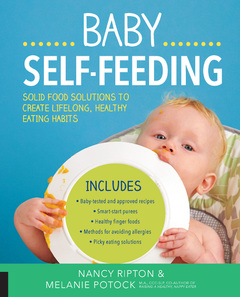Is Your Baby Choking or Gagging?

What Triggers a Gag Response in Babies
A young infant under six months of age will have a gag reflex that is triggered when the back three quarters of the tongue is stimulated. With so much surface area resulting in gagging, it’s easy to see why young babies gag so often when they put something in their mouth. This large area that triggers the gag reflex is another reason why babies under the age of six months should not be fed solids.
Starting around six or seven months of age the tongue area that stimulates a gag reflex area will start to recede. Proponents of baby-led weaning argue that this is one of the advantages of starting finger foods at six months. The gag reflex has receded enough that most babies won’t gag excessively, but is still very effective at keeping large pieces of food to the front of the mouth, only allowing well masticated food to reach the back of the mouth for swallowing. Every child has a different sensory system and touch receptors that signal the gag reflex to activate. Your baby’s gag reflex may be more sensitive than another baby’s. That’s true for adults too, so why not for young babies?
To help your baby learn to control the activation of the reflex, be sure to encourage him to mouth toys with a variety of textures. Choose toys with soft corners and chewies with long “arms” or “necks” that will reach farther back on the tongue. If that proves to be too stimulating, gradually work up to those types of toys by first offering wooden baby rings to fist and chew or toys with stubby appendages. Most of all, keep it positive and fun so that your baby continues to challenge himself and explore his toys more and more.
By about nine months of age, only the back third of the tongue will stimulate a gag reflex, so gagging while eating will be greatly reduced. Most children at this age can eat with minimal or no gagging.
Eventually, the gag reflex will shift even more posteriorly as the child learns to tolerate the stimulation of eating.





